

0


0

ART AND CULTURE
By Saswati Borthakur
12 April, 2017
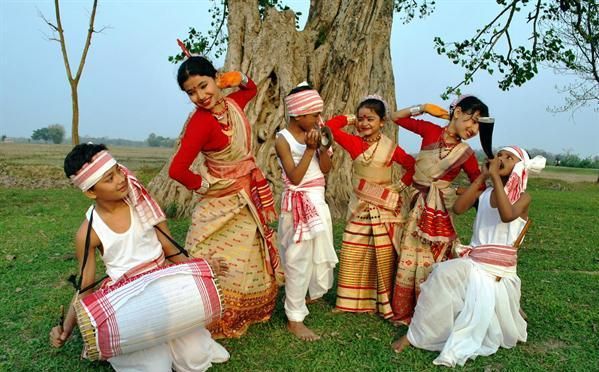
 Dancers and singers enjoying themselves
For me, being an Assamese, something about 'Bihu' and this time of the year screams happiness, colours, fragrance, music and dance. Yes, this time of the year which marks the beginning of the Assamese New Year and celebrated with 'Rongali Bihu'. The atmosphere is abuzz with 'Bihu Geets'(Traditional Songs). Pregnant branches laden with the exotic Foxtail Orchid 'Kopou', people dressed in their 'Bihu finery' and aroma of the freshly fried Pithas wafting through the air.
Dancers and singers enjoying themselves
For me, being an Assamese, something about 'Bihu' and this time of the year screams happiness, colours, fragrance, music and dance. Yes, this time of the year which marks the beginning of the Assamese New Year and celebrated with 'Rongali Bihu'. The atmosphere is abuzz with 'Bihu Geets'(Traditional Songs). Pregnant branches laden with the exotic Foxtail Orchid 'Kopou', people dressed in their 'Bihu finery' and aroma of the freshly fried Pithas wafting through the air.
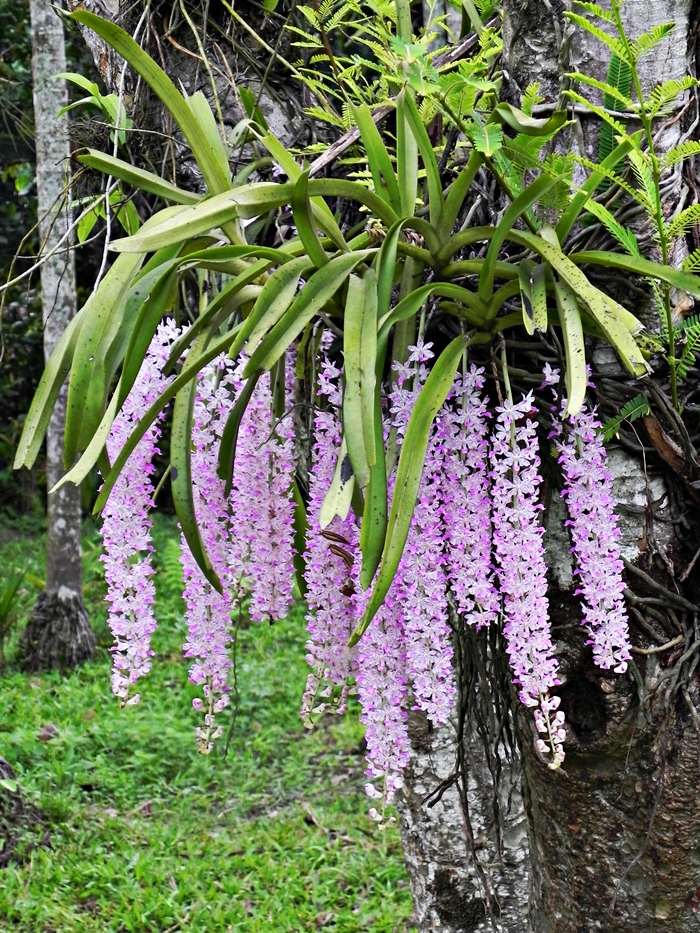 'Kopou Phool'-the state flower of Assam
'Kopou Phool'-the state flower of Assam
I remember Bihu being THE most important event of the calendar. It falls in the month of Bohaag or Baisakh and marks the onset of spring and the new agricultural season. It is a festival celebrated over many days. The first day is the 'Goru' Bihu, when the livestock and cattle are given a ceremonial bath with a paste of 'Mah-Halodhi' which is a paste made out of fresh tumeric and lentils(urad mostly). They are then thanked for their help. Nowadays, with nuclear families and cramped spaces, people don't have the luxury of raising livestock. But the spirit remains intact.
 Cows being given a ceremonial bath
Cows being given a ceremonial bath
In the evening, my grandmother would put 'Jetuka', a paste she made by grinding Henna leaves and Betel leaves, in a stone grinder. She would put this on our palms, make a fist and then cover it with banana leaves and tie with a string at the wrist. We would go to bed like this. And in the morning, we would open our palms and it would be all wrinkly, but stained with the most dazzling shade of orange. Henna plants have disappeared from most homes. For the sake of convenience, the women nowadays buy ready made Henna cones, which only take a couple of hours to colour the hands.
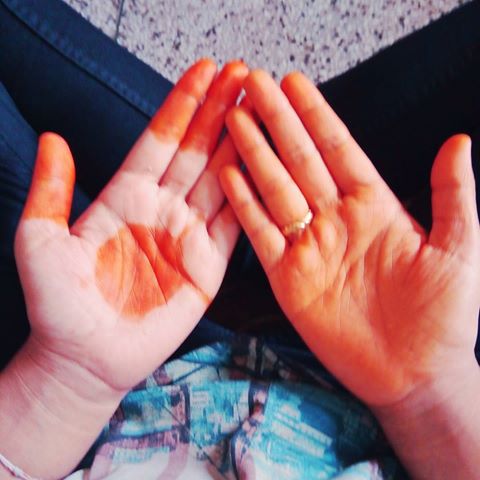 Jetuka or Henna adorned hands
Jetuka or Henna adorned hands
Second day is the 'Manuh Bihu' or the Bihu for the humans. We would all dress up in traditional 'Mekhela Sadors'. We would form a group of same-aged kids and would visit the neighbourhood houses, performing 'Husori', which is a dance set to the beats of 'Dhool' or drum. The people would give us something to eat or maybe a token of few pennies, which made me feel so proud. Though I am hardly home during this festival, my parents rue the fact that these celebrations have undergone a lot of changes. There are hardly any 'Husori' groups that would come to perform and they have to watch 'Husori' dances on TV.
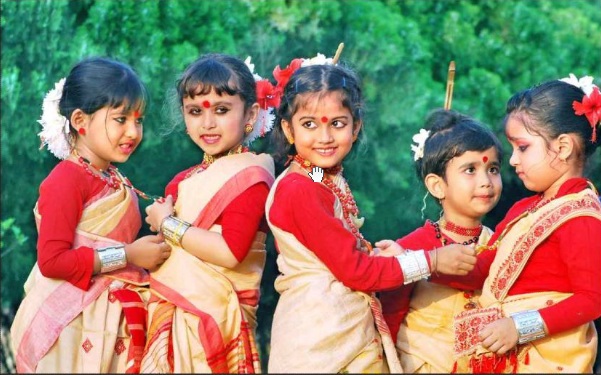 Little girls in traditional attire
Little girls in traditional attire
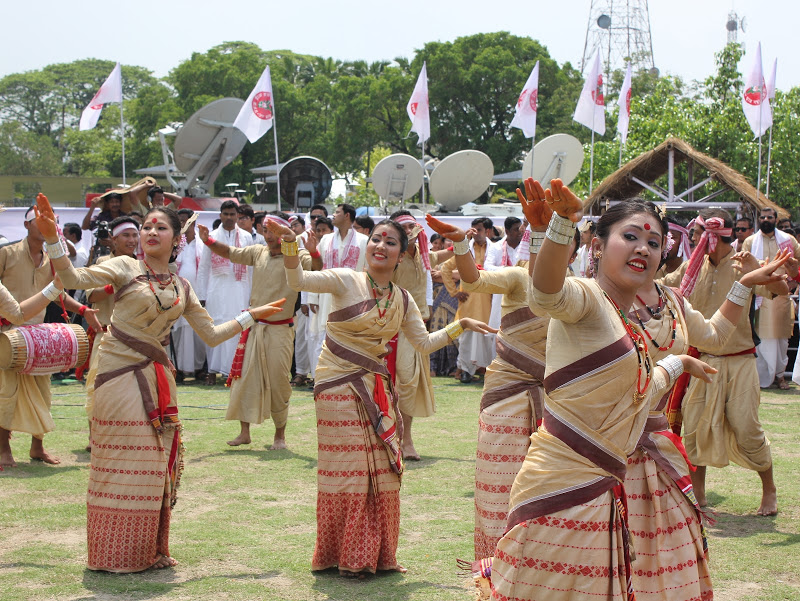 Many competitions are organised in open spaces
Many competitions are organised in open spaces
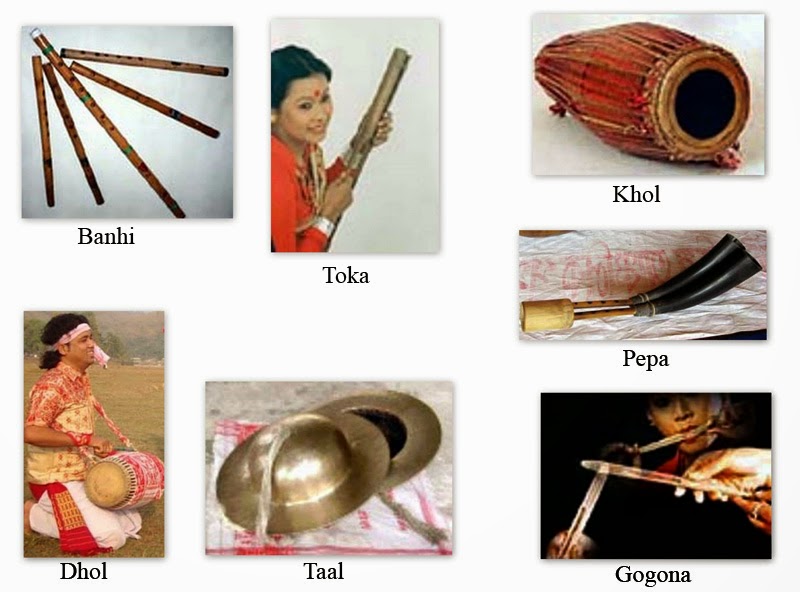 Traditional Musical Instruments.
Traditional Musical Instruments.
Many places organised 'Mukoli Bihu' or Bihu dance competitions held in the open. I, most looked forward to the 'Bihu Kuwori' competitions which literally translates to 'Bihu Princess'. After I moved out of my state for studies, I was left severely homesick. My father would cheer me up by sending the most gorgeous hand woven 'Gamosa'. These are basically white handloom towels with beautiful motifs woven in red. The 'Mukoli Bihu' at most places today have been hijacked by recorded Bihu songs on CDs. The resounding 'Bihu Geet' of yore is being replaced by the more commercial 'Film Music'. Also, many of the traditional instruments like Dhool(drum), Pepa(hornpipe instrument made with buffalo horn), Gogona(mouth instrument made out of bamboo), Baahi(a kind of flute) and many more accompanying the songs have slowly given way to electronic music.
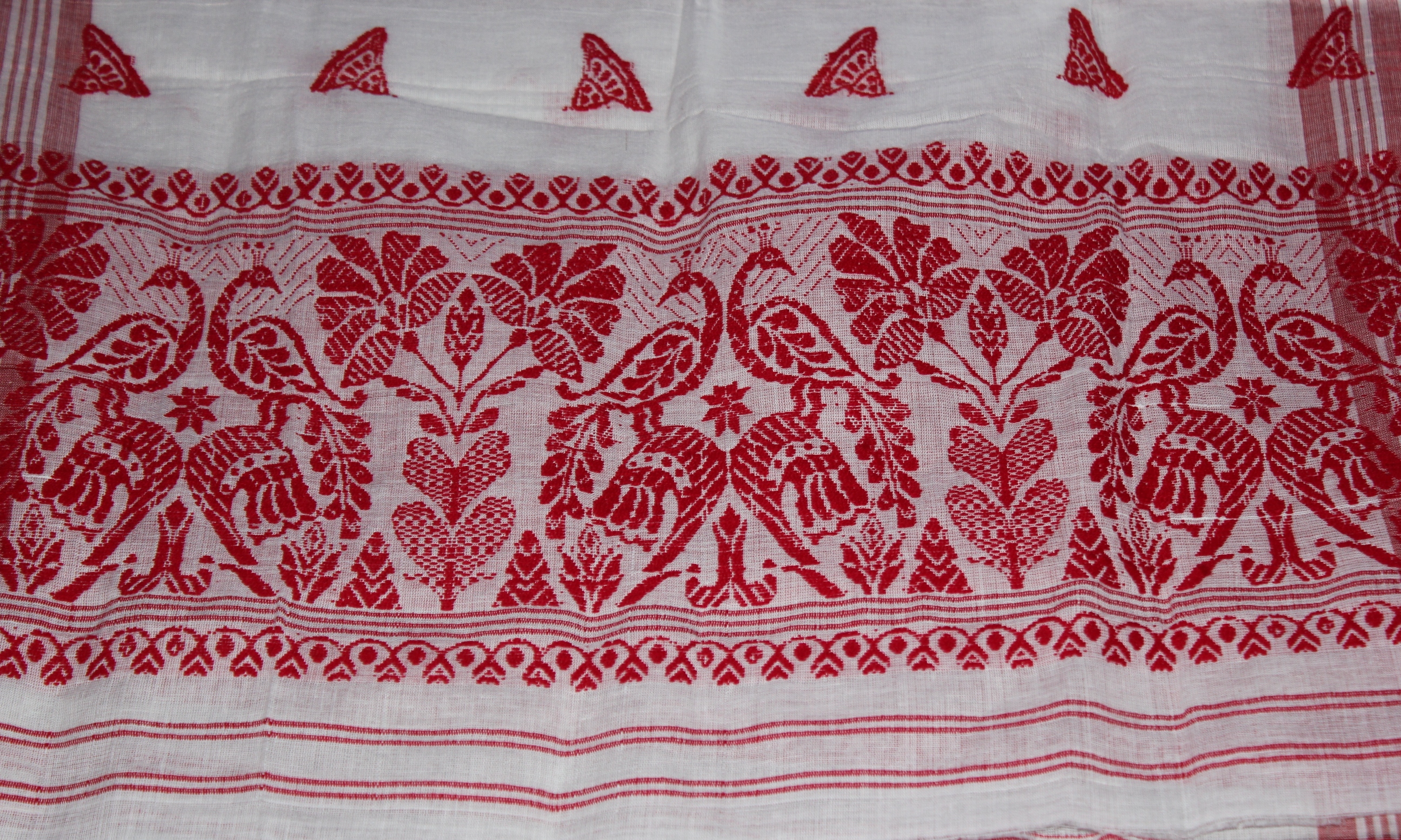 A traditional 'Gamosa'
A traditional 'Gamosa'
More and more people are ditching the arduous process of making peetha and buying the ready made ones. Instead of organising huge community feasts, the groups are getting smaller. The present generation prefer to connect with the festival via the medium of TV, reluctant to reach out to neighbours and relatives.
But There Is Hope.....
Although, many traditional artists are wary of passing the baton to their children, there are many new artistes which have taken these beautiful songs to newer heights. Artistes like Zubeen Garg, Papon Mahanta, Joi Baruah, Tarali Sarma, Anindita Paul etc are giving these traditional songs a new dimension.
But the rural areas are relatively untouched by this bout of commercialization. Even today, the simplicity that is synonymous with this festival is being kept more or less intact. But for someone like me, who has spent almost 20 years out of her home state, the very mention of this festival conjures up countless images and memories. Indelible memories which can never be taken over by a change in times.